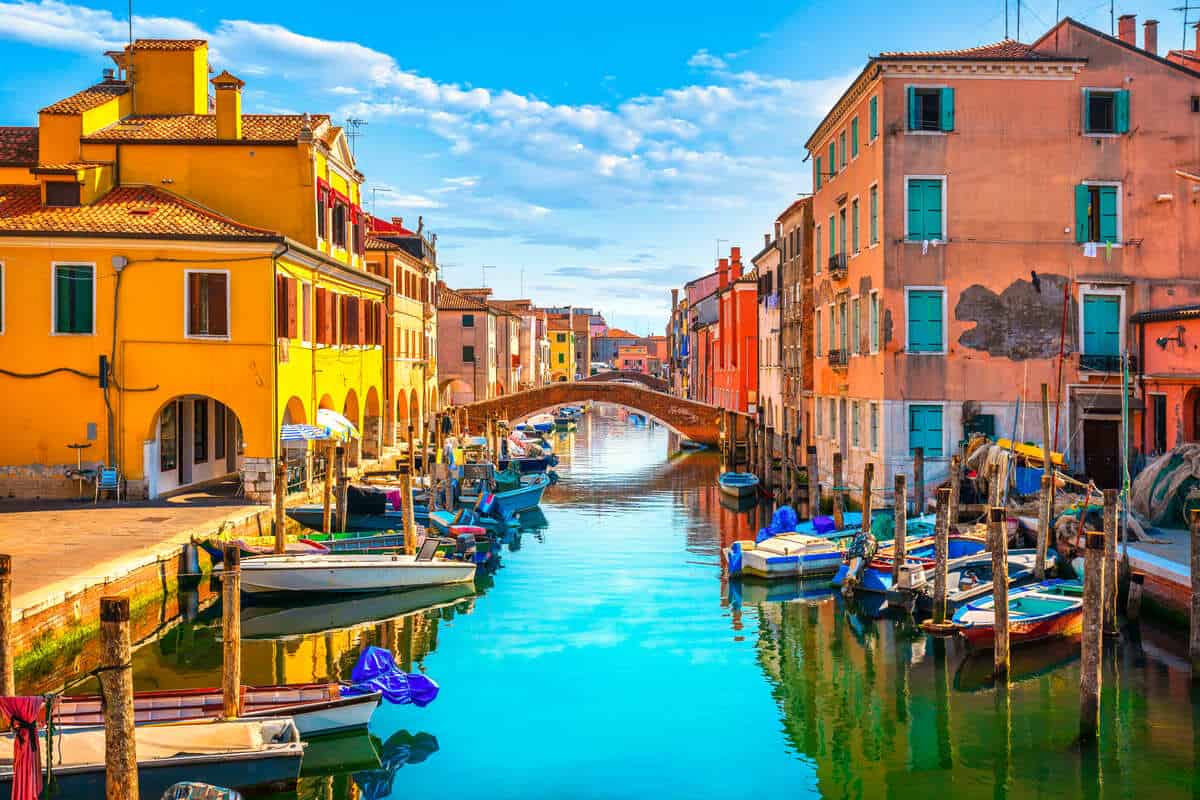With its winding canals that replace pathways, its very own ‘Venetian’ Gothic architecture, which awarded it UNESCO World Heritage status, and its unrivaled food scene, Venice is rightfully one of the leading destinations in Europe.
Despite its postcard-perfect city views, there is a darker side to Venice that can’t be easily overlooked.
Not only is it crowded – we still can’t fathom how a historic center home to around 50,000 inhabitants can host over 30 million guests yearly – but blimey, can be it pricey…
Fortunately for canal lovers, the ‘Serenissima‘ is not the only floating city in its parent lagoon: there is a quieter, more reasonably-priced alternative to Venice the masses are yet to ruin:
The ‘Little Venice’ No One’s Talking About

A little-known fact among tourists is that the Venetian Lagoon comprises not only the city of Venice, but numerous other islets, several of which are inhabited, and that similarly to the regional capital, are traversed by canals and dotted with historic monuments.
One of these island towns is Chioggia, one of the largest municipalities in the lagoon, with a population of over 49,000, roughly the same as archipelagic Venice, and its very own system of canals (not as expansive as its counterpart’s, but just as scenic).

The canals in Chioggia are lined by the narrow calli, which locals use to commute between the series of interconnected islets and bridges that make up the town, and it boasts a high number of medieval churches, several of which have had a Baroque makeover.
One of the most striking landmarks in town is the St. Mary of the Assumption Church, a Baldassare Longhena-commissioned cathedral withholding a treasury of 11th to 17th-century art, resting adjacent to the wooden jetties of the picturesque Perottolo canal.

Nearby, the church of St. Andrew and its ancient bell tower, suspected to be the oldest watch tower in the world, houses Palma the Elder’s famous Crucifixion, and from there, it won’t take you long to find Canal Vena, Chioggia’s ‘Grand Canal’:
A Picturesque Canal City With Very Few Tourists Around
It is the liveliest canal in town, with traditional Venetian restaurants, lace-making and souvenir shops and boats slowly making their way up and down the serene waterway; and the best thing is, compared to Venice, there are very few tourists around.

This is still Italy, where even the most off-beat, remote of hilltop cobbled towns is likely to have made it to someone’s bucket list, but without a shadow of a doubt, Chioggia feels like a breath of fresh air after a jam-packed Venice.
Strolling its pastel-colored fondamenti, or getting that creamy, melt-in-your-mouth pistacchio gelato from local favorite Oasi del Gelato, you’re unlikely to bump shoulders with strangers, or wait too long in line: there are no recent figures for tourism levels in Chioggia, but trust us, it is not significant.
Chioggia Is A Lot Cheaper Than The Venetian Capital

Other than being less crowded, Chioggia is notoriously cheaper than the Venetian capital: would you believe, for instance, if we told you a single room in a centrally-located guesthouse costs a negligible $54 to book per night in the peak of summer?
Or that a boutique four-star, a short 15-minute walk from a natural beach – this is a lagoon in the turquoise Adriatic Sea, after all – will only set you back $123 for an overnight?
For that price in central Venice, you’d be lucky to find a bunker bed in a dormitory.

If Venice is on your radar for summer, we’d encourage you to budget $300 per night on accommodation only, and with the latest ticketing system introduced that essentially bars entry into Venice for non-pass holders, we’ll go out on a limb and say it is far from being tourist-friendly.
Restaurants in Chioggia are surprisingly cheap, too, with $7 Margherita pizzas galore, and Venetian-style seafood pasta for $15 on average: either way, you won’t have to come up with ingenious ways to save money here as you would in Venice.
How To Get To Chioggia

The nearest airport to Chioggia is Marco Polo International (VCE), which serves the city of Venice as well as other island municipalities in the wider lagoon, and it’s 37 miles north of Chioggia.
There are seasonal nonstop flights to Venice from select U.S. cities, such as Atlanta, New York (JFK), and Newark.
Once landing in Venice, the easiest way to get to Chioggia is getting a local ‘Arriva Veneto’ bus from Venice (Piazzale Roma), with a travel duration of just over an hour and tickets costing $6 on average.

The longest, and most scenic way, however, is boarding a vaporetto (Venetian ferry) from Venice to Lido, the longest, narrowest island-town in the lagoon, with the transfer taking roughly 14 minutes and tickets selling from $9.
After walking around Lido and admiring its stately architecture and unspoiled beaches, you can board a Chioggia-bound vaporetto (line 11) to Chioggia, tickets costing roughly $13, or the equivalent in euros, at a total travel distance of 1h24.
It’s more expensive, and it takes time with two ferry lines, but there’s no beating those views of island towns as you pass them heading to the extreme south of the Venetian Lagoon, nor the sunsets over the Adriatic if you’re commuting waterside later in the evening.
Credit: Source link

